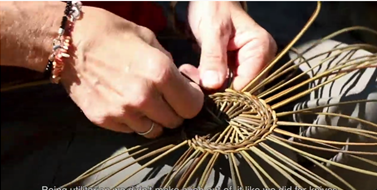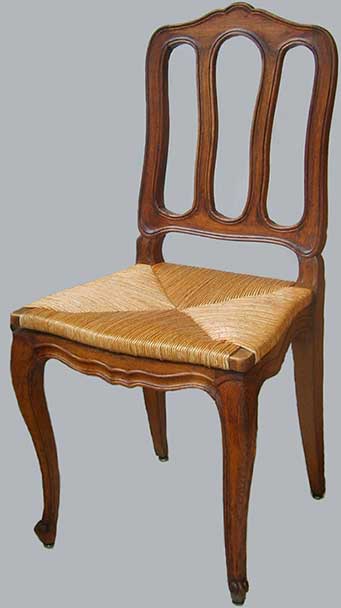 - Welcome - Plant material
- Welcome - Plant material
Vegetable matter
Wicker, rattan, straw, sorghum, millet, and rush are the main plants used for the creation of traditional useful objects and some modern pieces inspired by design.
Basketmaker
The basketmaker works with wicker and rattan. He makes baskets for the baker, the fisherman, the cheesemaker, and the winegrowers. The wicker is cut, stored in the form of bundles, and debarked for the manufacturing of fine objects. Unbarked strands are used for more rudimentary work.
Traditional basket weavers had to cultivate and harvest osier. Today, the raw material is purchased from an arborist specializing in osier. The quality of these plantations influences the final product.
Basketry schools exist in France at Fayl-Billot in Haute-Marne in the Grand Est region with the teaching of wickerwork, and in Germany at Lichtenfelds in Bavaria. This profession continues in several regions of Europe, including on the island of Madeira in Portugal and also on the island of Corsica.

Braiding of cheese basket, courtesy of Mrs Noëlle Figarella,
"Master Craftsman" is based in Corsica in Fattoghja in the northeast of the island.
Straw artisan
The work of the straw is part of the know-how in our countryside; this technique is used for the realization of chairs and armchairs with a straw seat. A citizen of Picardy held captive in Bavaria as a soldier under Napoleon I around 1813 would have imported the method into Northern France; it was Nicolas Tourneur.
The straw is harvested from the fields, still green, and must be dried afterward. It is moistened before being worked on. It is braided or twisted in its natural state, or the stems can be dyed.
There are several types of patterns, such as the cross model, the square model, the diamond point model, and the babiche weaving for our Canadian cousins. The latter process was also used in North America for making snowshoes.

Realization of the straw seat.
